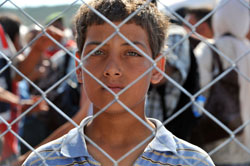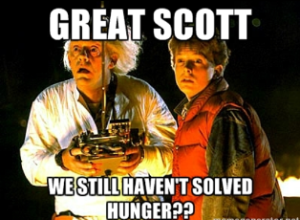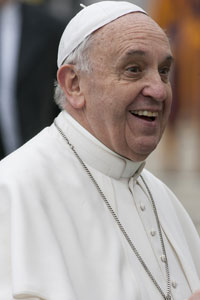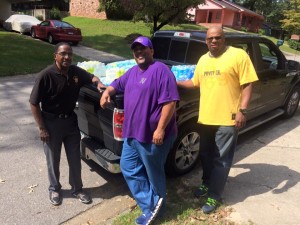People in Detroit are still talking about how well behaved – respectful, joyful, generous and kind – ELCA youth were. After 18 years working with the ELCA Youth Gathering I am no longer surprised by such comments. I have grown to expect that ELCA youth will represent themselves, their denomination and their particular congregation with infectious joy, respect and generosity.
Most people who comment about the behavior of ELCA youth seem astounded and perplexed, as if they assume all teenagers are aloof and narcissistic, and not trustworthy. When people who encounter youth at an ELCA Youth Gathering wonder how we have such great kids, I always want to say, “It isn’t rocket science.”
It’s mostly about the adults who value and invest in rearing children and youth in the faith. After all, if we want Christian children and youth, we need Christian adults who are authentic, available and affirming (“Triple A Adults,” thank you Vibrant Faith) to accompany them not just in their faith journey but in their journey of living in 21st century North America.
I know that there are some dysfunctional congregations, but for the most part ELCA congregations create an environment within which children and youth learn how to organize their lives around their baptismal identity of being an agent of God’s mission in the world. That mission, in my opinion, inspires certain behaviors like self-renunciation (Philippians 2:7), service to others (Galatians 5:13), striving for justice (Jeremiah 22:3), advocating for peace (2 Corinthians 5:18), and loving all (John 13:34). Those are the behaviors that the citizens of the host city bear witness to when the Gathering is in town.
That being said, I am not saying that the message of the gospel is contingent on Christians behaving in a prescribed manner. As I leave my position as director for the ELCA Youth Gathering, my only worry is that during my tenure as director we communicated that certain behaviors exhibited by God’s people are a vehicle through which we participate in bringing about the reign of God.
The 2009 ELCA Youth Gathering was the first for which I was director. Prior to that I was in an assistant role but still had primary responsibility for the program content. The 2009 theme was “Jesus, Justice, Jazz,” and the tag line was “Love like Jesus.” That infers certain human behaviors. Because a major focus was serving the people of New Orleans that year, some young people may connect “loving like Jesus” to serving others, which is OK on the surface, but I worry that they will think their own agency and behaviors are the key to proclaiming the gospel.
In 2012, we taught young people that they were “citizens with the saints,” and tried to model that by teaching that serving isn’t a one-and-done kind of experience, that the behavior of accompaniment means we stay with people for the long haul. I don’t disagree with that on the surface, but I worry that it focuses on a behavior that is transactional.
Here’s the deal: The reign of God (or the kingdom of God) is not something we create or try to replicate by imitating Jesus or creating a world according to the values Jesus espoused in the Gospels. It is God who creates God’s own reign.
The danger of connecting human behavior with bringing about the reign of God on earth – which I fear I have mistakenly communicated more than once – has been a constant temptation for the church and an ever-convenient substitute for the gospel. Clearly, several of our neighbors, and we ourselves, think that doing good works is the church’s message. That may even be what some people think is the purpose of the ELCA Youth Gathering (or a mission trip). But, as I leave this position which I have been privileged to hold for 18 years, I want to reiterate again that the mission of the Gathering is adolescent faith formation. I pray that because of the ministry with the Gathering young people will come to know that we are justified by faith alone, saved by grace alone, and redeemed from our sin by Christ alone. Doing good works produces sinners who are (potentially) better behaved, but the gospel of Jesus Christ transforms sinners into the adopted sons and daughters of God whose gratitude compels them to serve their neighbors.





